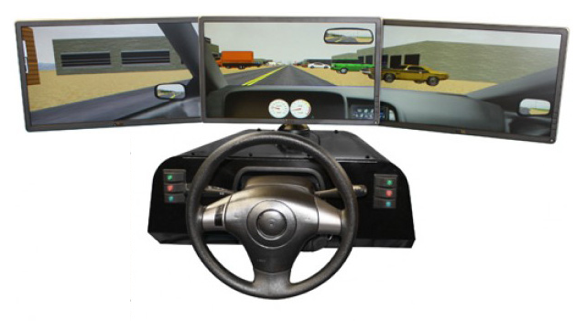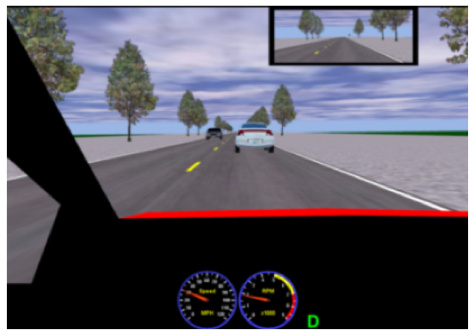Our research examines behavior in manual and automated driving using a STI-SIM driving simulator. We study perceptual and cognitive factors that affect driving performance and aim to understand the processes underlying driving. For example, we demonstrated that judgments of when it is safe to overtake a lead vehicle is influenced by the size of the vehicle in the oncoming lane (Levulis, DeLucia, & Jupe, 2015). Drivers accept more gaps and make more false alarms when the overcoming vehicle is small such as a motorcycle, compared to larger vehicles such as a car or truck.
Our research also suggests that the processes that underlie space perception depend on distance (DeLucia, 2008). A driver’s decision of when to step on the brakes is a judgment of when a collision would occur with the car ahead—a judgment of time-to-contact. To avoid rear-end collisions, drivers must detect that the car ahead of them is decelerating. The driver may rely on brake lights. Alternatively, before the brake lights illuminate, the driver may notice the car slowing down due to its growth in the visual field (i.e., optical expansion). Our studies suggest that the type of information that drivers use depends on how far ahead the lead car is located. The perception of very far distances may be served by cognitive processes and the perception of vary near distances may be served by non-cognitive processes.


